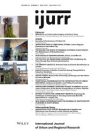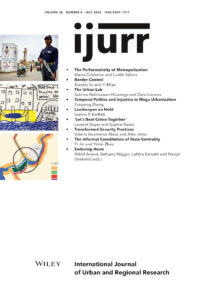To explain the continuous hold of a single touristic real estate investor over the greater part of Crete’s easternmost peninsula, Cape Sidero, for a period of over thirty years, this article examines the production of rent gaps on ‘exceptional’ rural land through increasing potential rent rather than a falling capitalized rent. I examine Neil Smith’s ‘alternative’ rent gap hypothesis as it applies to two main factors: the production of and sustained control over land of monopolistic quality, which has no fixed value and is resistant to depreciation; and the dramatic neoliberal reworking of land markets through institutional and legislative changes, which produce legally ‘exceptional’ spaces. I employ the conceptual lens of the rent gap to examine how opening up a rent gap on ‘exceptional land’ based solely on the promise of (re)development can be a sufficient driver of land dispossession. Simply sustaining this promise can perpetuate land with monopolistic quality as a site of rent-generating possibility, and while this process might never lead to (re)development, it can result in the submersion of the landscape into a captive, limbo state, stealing its future.

